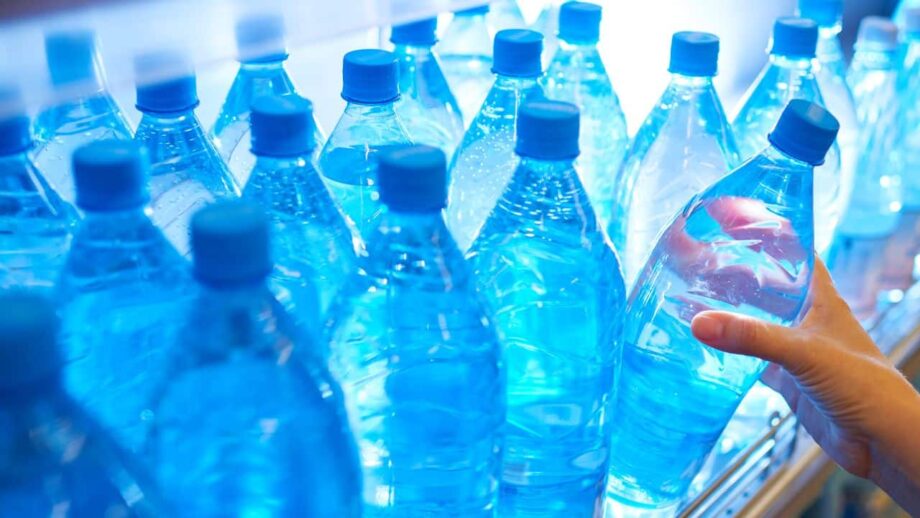New data is showing how significant of a risk microplastics are to human health. Our overreliance on plastics in our lifestyle includes our utensils, drinking bottles, and cookware, we routinely expose ourselves to harmful microplastics. Studies have shown that we ingest these broken-down plastics through our diet, environment and skin to skin contact. Additional reviews have found that many of our common foods stored in plastic are contaminated with these microplastics. Much of the exposure comes from the processing and packaging of these products even before they are heated.
Essentially, when you heat a plastic container in the microwave or when you drink from a plastic water bottle or top you are exposing yourself to micro and nano plastics. Using plastic utensils to eat or cook with is also problematic. Food packaged in plastics has traveled thousands of miles in various temperatures before you purchase it at the grocery store.
A recent study found that a single tea bag releases upward of 11.6 billion microplastis and 3.1 billion nanoplatics into a single cup of tea. An additional study found that microplastics can leech into human bone. In animal studies, microplastics have been found to increase intestinal permeability and lead to various metabolic disorders.
It is not a reach to suggest that many of the common health issues affecting us today can be linked to micorplastic consumption in some form.
How can we remove microplastics from our body?
Our liver is the source of phase II detoxification and routinely handles environmental chemicals. For example, BPA is excreted in roughly 6 hours while phlataes are removed in around 24 hours. Yet PFAS, the forever chemicals, can not be broken down as rapidly and generally last in our system for upwards of 7 years where they accumulate in our liver and kidneys.
Microplastics are scary because we know they accumulate in our organs and tissues but we don’t know the long-term health implications yet.
Sulfurophane is a powerful chemical that activates the Nrf2 pathway which enhances our natural detoxification enzymes. It controls the enzymes that helps our body clear our many chemicals and controls the phase II detoxification pathway. Studies show that sulfurphane can excerte a variety of environmental chemicals. Broccoli sprouts are high in sulforphane and possess up to 100 times more sulforhophane than regular broccoli. Additionally, you can take a sulforhphane supplement.
Dietary fibers can bind to BPA and palates in the GI tract and promote their excertion and they may be able to bind microplastics and remove them in the gut. Nonfermentable fibers (vegetables) quickly digest and will reduce the time microplastics are in your body. Fermentable fibers encapsulate microplastics so they don’t get absorbed in the first place. Granted this was seen in animal models but it does show promise.
Eat more fiber this way.
- Consume high amounts of sulforaphane sources such as kale, broccoli, and cauliflower with broccoli being the main sulforaphane food. You can supplement with sulforaphane as well.
- Add ground flax seed and psyllium husk fiber to your yogurts, smoothies, and salads.
- It’s also a good idea to consume avocados and multiple servings of berries during your day.
Physical activity and sweating.
Yoga, high-intensity workouts, long walks saunas, and hot tubs can also help excrete microplastics. We know that regular sweating can be powerful for removing BPA and palates so they may help with microplastic removal.
Avoiding microplastics is also beneficial. How can you do it?
Do not consume or drink anything in plastic bottles. If you think about a plastic water bottle for a second, it has traveled thousands of miles in various temperatures before it reaches your home. All of that time the microplastics contained in the bottle have broken down into the actual water. We know that highly acidic foods such as balsamic vinegar or apple cider vinegar can also cause the breakdown of plastics.
This is why you must purchase the majority of your foods in glass where possible. There is only so much room to cut, however. I’m not going to stop buying frozen fruits or vegetables since they are stored in plastic and the variety of game meat that I enjoy is often packaged in plastic. Focus on cutting out where you can including using stainless steel drinkware, bamboo/wood utensils, and storing your food in glass or stainless steel.
Polyester clothing has been shown to be problematic as well. Again, limit where you can limit. If you don’t need to wear compression gear then wear straight-up cotton.
You can also aim to improve your water quality by using a reverse osmosis (with remineralization) countertop or home system. I know this is asking a lot. There are multiple plastic filters that have data on removing microplastics but I’m not sure if that’s defeating the purpose.
References
1) https://iadns.onlinelibrary.wiley.com/doi/full/10.1002/fft2.437
2) https://pubmed.ncbi.nlm.nih.gov/39079299/
3) https://pmc.ncbi.nlm.nih.gov/articles/PMC10389239/
